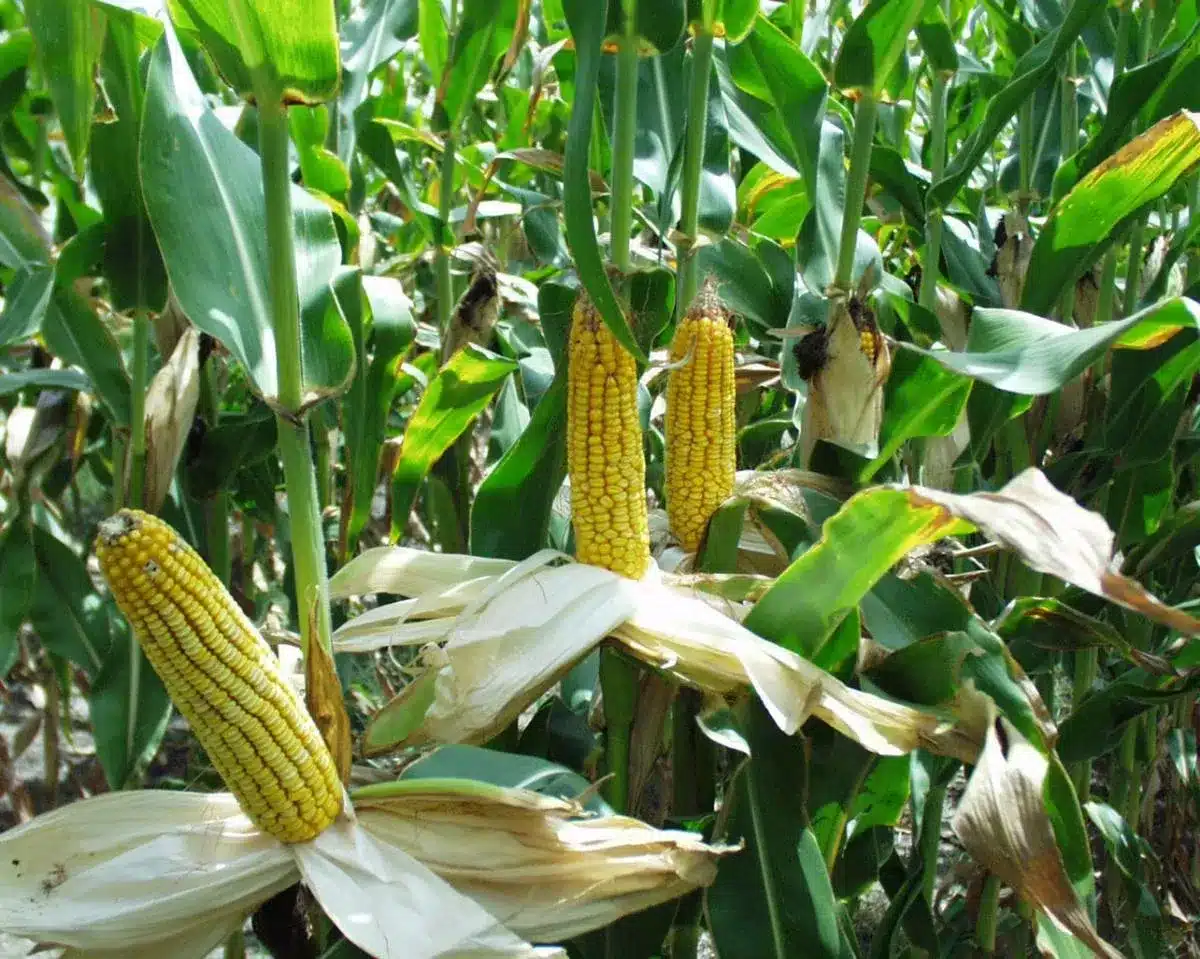What’s in today’s article?
- Why in News?
- Green Revolution in India
- Green Revolution in Maize
Why in News?
- India is a success story of the green revolution in maize driven by the private sector, with maize production having more than tripled over the past 20 years.
Green Revolution in India:
- About:
- The history of the Green Revolution in India goes back to the 1960s when high-yielding rice and wheat was introduced to increase food production.
- It was a period during which agriculture in India was converted into a modern industrial system by the adoption of technology, such as
- The use of high yielding variety (HYV) seeds,
- Mechanised farm tools,
- Irrigation facilities,
- Pesticides and fertilisers.
- Mainly led by agricultural scientist M. S. Swaminathan in India, this period was part of the larger Green Revolution endeavour initiated by Norman Borlaug –
- for increasing agricultural productivity in the developing world,
- by leveraging agricultural research and technology.
- Impact:
- Crop varieties can be chosen by breeding for a variety of beneficial traits, including high yields, resistance to disease, fertiliser responsiveness, and product quality.
- It resulted in an increase in food grain production (especially in Punjab, Haryana, and Western UP), reduction in imports (leading to self-sufficient), industrial development, rural employment generation, etc.
- Criticism: Despite its initial success, the Green Revolution was met with much controversy throughout India. This is mainly due to –
- Increased input cost: This resulted in the indebtedness of the small farmers due to increased borrowing to finance the change from traditional seed varieties.
- Environmental damage and reduced soil fertility: Due to excessive and inappropriate use of fertilisers and pesticides.
- Increased regional disparities: This is becausethe green revolution spread only in irrigated and high-potential rainfed areas.
- Largely limited to wheat and rice.
Green Revolution in Maize:
- Maize crop in India:
- In India, maize is principally grown in two seasons, rainy (kharif) and winter (rabi).
- Kharif maize represents around 83% of maize area in India, while rabi maize corresponds to 17% maize area.
- Among the maize growing countries, India ranks 4th in area and 7th in production, representing around 4% of the world maize area and 2% of total production.
- Maize production in India:
- There is another less celebrated revolution that has taken place in India.
- Between 1999-2000 and 2023-24, annual production of maize has more than tripled, with average per-hectare yields rising from 1.8 to 3.3 tonnes.
- Another feature of maize in India:
- Maize is a fuel crop rather than a feed crop. Less than 25% of the maize produced is consumed directly by humans.
- An estimated 60% goes as feed for poultry and livestock, which is indirectly consumed as food by households (as chicken, egg or milk).
- 14-15% of India’s maize utilisation is for industrial purposes. Maize grains have 68-72% starch, and 1-3% of other simple carbohydrates.
- Starch has applications in the textile, paper, pharmaceutical, food and beverage industries.
- The usage of maize as a feedstock for ethanol, which is mixed with petrol, is more recent.
- New varieties of maize:
- The Indian Agricultural Research Institute (IARI) has bred India’s first “waxy” maize hybrid with high starch content, making it better suited for ethanol production.
- The Mexico-based CIMMYT (International Maize and Wheat Improvement Center) has opened a maize doubled haploid (DH) facility at Kunigal, Karnataka.
- It produces genetically pure maize that can be used as parents for further crossing and breeding of hybrids.
- What advantage does maize have over wheat and rice?
- Rice and wheat are resistant to hybridization because they are self-pollinating plants, meaning that both the male and female reproductive organs are present in their flowers.
- This contrasts with maize, whose ability to cross-pollinate makes hybrid breeding a profitable endeavour.
- Role of private sector in green revolution in maize:
- More than 80% of India’s maize crop is hybridised by the private sector.
- CIMMYT is sharing its improved inbred lines with both public sector institutions and 25-odd private seed companies.
Q.1. What is the Indian Agricultural Research Institute (IARI)?
The IARI, commonly known as the Pusa Institute, is India’s national institute for agricultural research, education and extension. Currently located in Delhi, it is financed and administered by the Indian Council of Agricultural Research (ICAR).
Q.2. What is Green Revolution 2.0?
Green Revolution 2.0 places an emphasis on sustainability by promoting less water-intensive crops, introducing water pricing mechanisms, and addressing unsustainable practices.
Source: The green revolution in maize | ICAR
Last updated on December, 2025
→ Check out the latest UPSC Syllabus 2026 here.
→ Join Vajiram & Ravi’s Interview Guidance Programme for expert help to crack your final UPSC stage.
→ UPSC Mains Result 2025 is now out.
→ UPSC Notification 2026 is scheduled to be released on January 14, 2026.
→ UPSC Calendar 2026 is released on 15th May, 2025.
→ The UPSC Vacancy 2025 were released 1129, out of which 979 were for UPSC CSE and remaining 150 are for UPSC IFoS.
→ UPSC Prelims 2026 will be conducted on 24th May, 2026 & UPSC Mains 2026 will be conducted on 21st August 2026.
→ The UPSC Selection Process is of 3 stages-Prelims, Mains and Interview.
→ UPSC Result 2024 is released with latest UPSC Marksheet 2024. Check Now!
→ UPSC Prelims Result 2025 is out now for the CSE held on 25 May 2025.
→ UPSC Toppers List 2024 is released now. Shakti Dubey is UPSC AIR 1 2024 Topper.
→ UPSC Prelims Question Paper 2025 and Unofficial Prelims Answer Key 2025 are available now.
→ UPSC Mains Question Paper 2025 is out for Essay, GS 1, 2, 3 & GS 4.
→ UPSC Mains Indian Language Question Paper 2025 is now out.
→ UPSC Mains Optional Question Paper 2025 is now out.
→ Also check Best IAS Coaching in Delhi

















